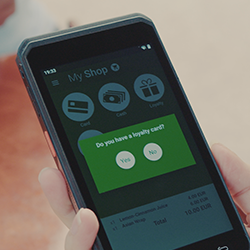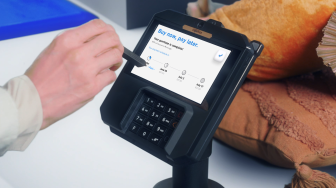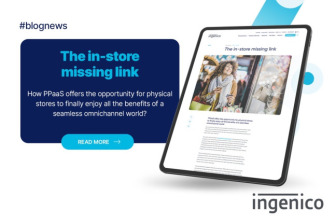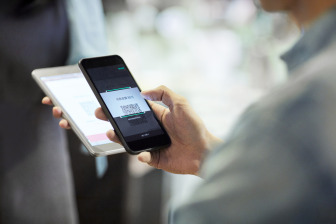I haven’t made an empirical study of it, but I’m sure that in the last few years manufacturers of wallets – the sort you put in your back pocket, coat or bag, not the digital kind – have been making increasingly thinner versions of an item which most of us use every day in one form or another. Why? Because consumers who previously needed room for what sometimes amounted to a small deck of loyalty cards, have been ditching them in droves, either because they’ve given up on the traditional loyalty programme they subscribed to and forgotten about (and which never brought them much anyway), or because the programme itself ditched cards and relies on ‘data’, that’s in the ‘cloud’ (and which, just to make it easy, requires a password that has to have eight alpha-numeric characters but can’t include your partner’s birthday or your dog’s name).
All that to protect a reward worth less than a euro …? Is it worth it? A lot of people didn’t think so and gave up on loyalty programmes. So, Loyalty 2.0, (which was really Loyalty 1.0 in search of a makeover) never really became what it could have been. Maybe now is the time for Loyalty 2.0 to really happen.
Loyalty is all about engagement
That was then. Now, the fact that at best half of those cards were used on a regular basis has meant that the more advanced retailers have moved on from the simple identifier card based on earning and burning, to more sophisticated engagement with their loyal customers. We take a look here at what’s been happening in loyalty and how customer engagement at the point of sale is going to be a key driver in the future. For simplicity, I’ve excluded the big supermarket loyalty programmes. Not because they’re not interesting – they are, and they’re genuinely sophisticated – but their economics, and indeed their aims, are different to those of other types of programme designed to strengthen relationships between stakeholders.
One of the huge changes that has happened since Loyalty 1.0 is how identifying the customer and their transactions has become easier by using the payment card as the primary identifier with which to recognize the customer. At its most basic, this is done in the back office with transactions parsed and the bonus (cashback, points…) calculated on the relevant spend. It’s easy to set up – nothing to do at the POS and it’s fine insofar as it goes, but there is little or no dynamic interaction at the moment of purchase. The more sophisticated solutions interact in real time, on the terminal, with the customer, whether for earn or burn. It’s all about reducing friction at the point when the customer is most susceptible to positive messaging (she’s just bought something, so she’s happy) while being recognised for their worth (she’s just bought something, so she needs to be cosseted to ensure she’ll come back next time).
Making earning points easier
Because there is no need to issue a specific loyalty card – with all the chances that the customer forgets to take it out when they pay – customers get to earn points every time they spend. But with that goes the risk of over-rewarding customers: awarding them points without them knowing it. Happy customers perhaps, but not much loyalty. That’s why signing up for rewards before they’re granted has become the norm. Even better is when they get to see what they earn, when they earn it. And this generates valuable data (more on that later) that can be used to target promotions and craft them better.
And the figures speak for themselves, according to one study, transaction volume from cardholders who signed up for promotions before being given them rose by 745%!
When card linking means real-time benefits
One of the advantages that a traditional, fully integrated retailer programme has is that it can apply bonuses before payment actually happens. Some of the more sophisticated card linked loyalty programmes means the customer gets and feels the benefits of the programme when they’re paying, maximising engagement. That supposes a pretty complex back and forth between terminal, cash register and back again but it can be really worth it.
Data is important (of course)
For a long time, data was the holy grail of loyalty. It was going to be the saviour of the traditional programmes, the one that would finally let them break free of being tied to earn and burn (and reduce their costs). Except it didn’t quite work out that way. Let’s be clear: the big retail loyalty programmes live and die by basket data. To some extent they always have, and there’s no doubt that they always will. But a lot of other programmes still operate on a very basic transaction volume metric. Airline and hotel programmes are an example: status is based on the number of flights taken, rewards increasingly on customer spend. And these are programmes that have access to reams of data on a customer’s habits. That’s partly explained by the need to communicate simply with your customer. It’s easier to say 10 points for every euro spent, first reward at 10,000 points than to treat each customer separately according to some algorithm to which they don’t have access. Where data is being used smartly though is in targeting offers to the most susceptible customers, and there the results can be spectacular, as we saw earlier.
What next?
At Ingenico, we are convinced that loyalty, and in particular card-linked loyalty, will continue to develop, but in new ways and driven in part by the advent of smart POS using the Android operating system. The opportunity that a larger screen offers to interact in real time is one that is there for the taking. But accessing the terminal, designing the payment journey so that the messaging happens at the right time, interacting with the cash register to use earned points and the like has traditionally been the preserve of the Tier One merchants (and even they found it not so easy).
New technologies and instore payment orchestration from solutions such as PPaaS (Payments Platform as a Service) are making that easier for them and accessible to smaller merchants. And those smaller merchants are asking their payment providers for these types of solutions when in the past they’d have been content with relatively unsophisticated solutions. And if they don’t get them from them, they’ll vote with their feet and get them somewhere else.
Smart marketing of the programme to customers will remain fundamental to success, but this marketing will be increasingly demanding of what the underlying technology is expected to provide. Not just at the point of payment, but also on the data provided and the analysis of this data. Basket data won’t be available for everyone any time soon, but smart solutions that parse receipts and capture data in novel ways are coming to market and making such data available for savvy marketers to crunch and turn into winning strategies.
Either way, it’s safe to say that Loyalty 2.0 is, (finally), coming our way. The question is: why did it take so long? (But that’s a whole other story!).











